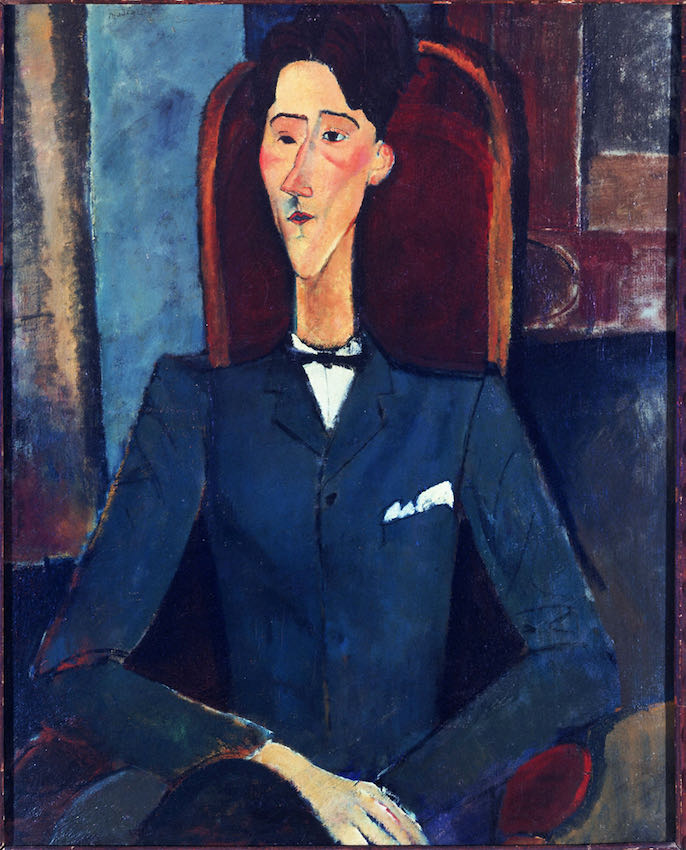
The visual arts of Jean Cocteau
ArtWizard 04.08.2021
“Art is a marriage of the conscious and the unconscious.”
Jean Cocteau
Jean Cocteau was born in one of the Paris suburbs in 1989, La Maisons-Laffitte, in the heart of a bourgeois Parisian family. The artist discovered theater and cinema at a very early age. His father committed suicide when Jean was 9 years old. At the age of 15, he leaved home to enter high school. He was expelled in 1904 for indiscipline and failed his baccalaureate twice. In 1909, he published his first collection of poems. Attending various artists' circles, the artist was as passionate about poetry and cinema. His meeting with Sergei Diaghilev, master of the Russian ballets, had a profound effect on him. From their collaboration several ballets were born, including Parade, set to music by Erik Satie, with sets by Pablo Picasso. He enlisted as an ambulance driver when the First World War broke out. Back in Paris, Max Jacob introduced him to the young poet Raymond Radiguet, whom Cocteau took under his wing. Radiguet passed away at the age of 20 in 1923, leaving Jean Cocteau to sink slowly into opium.
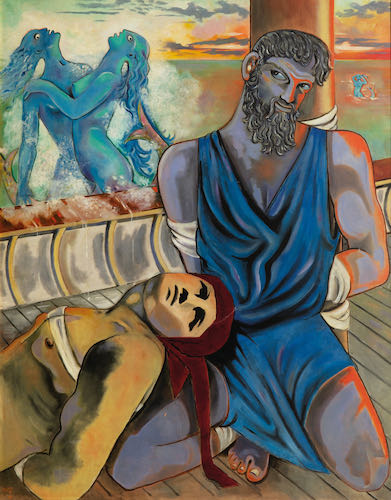
Jean Cocteau, Ulysse et Les Sirènes, 1951
A poet, librettist, novelist, film director, actor and painter, Cocteau was a remarqauble artist. Some of his most important works include mostly literature poems, plays, novels, such as the as poem L’Ange Heurtebise (1926), Le Grand Écart (1923), Le Livre Blanc (1928), and Les Enfants Terribles (1929); the stage plays La Voix Humaine (1930), La Machine Infernale (1934), Les Parents Terribles (1938), La Machine à écrire (1941) as well as some surrealist movies.
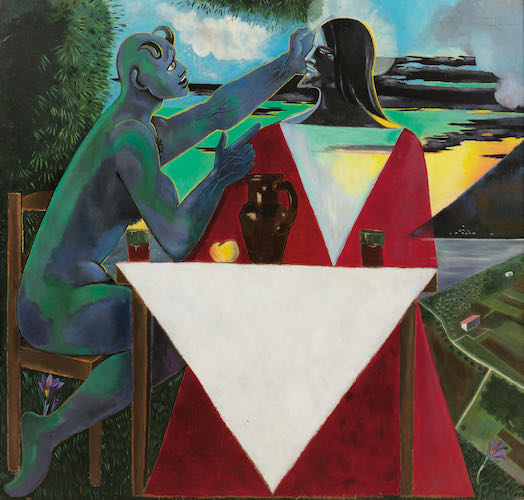
Jean Cocteau, La Tentation Du Christ Sur La Montagne, 1951
The family of the artist was wealthy and interested in music and arts, a real Parisian bourgeoisie. The encounter with arts for Cocteau was first with theater, both as more entertaining and simpler as forms, such as the circus but also the plays from the Comédie-Française. At the age of 19, the artist published his first volume poems La Lampe d’Aladin. In this life, Cocteau continued to be mainly interested in literature, however it is quite compelling to observe his visual arts, his paintings.
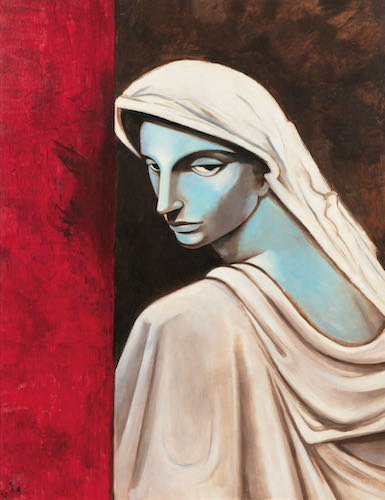
Jean Cocteau, Portrait D’Une Tragédienne, 1951
In visual arts, as in literature, Cocteau was one of the artists who marked the 20th century. He was a friend with numerous avant-garde artists and an inspiration to them. A trendsetter, he inspired the artists of his generation creating portraits with a genius touch, always original and showing rare intuition and talent.
Largely self-taught, he worked through trends of Cubism and Surrealism to engage in the philosophical questioning of human existence in relation to Christianity, psychoanalysis, sexuality, industrialization and the changing face of humankind as a result of modernization. He came into contact with the artists of the avant-garde, with whom he would sustain life-long relationships, including Pablo Picasso, Amedeo Modigliani and André Gide. Among his major early works was Parade, his scenario for a ballet produced by Sergei Diaghilev, in collaboration with Picasso, Erik Satie and Guillaume Apollinaire. Some of his works the artist made very similar to the style of Picasso with large cubist-like way to drawing faces and heads of his human figures.
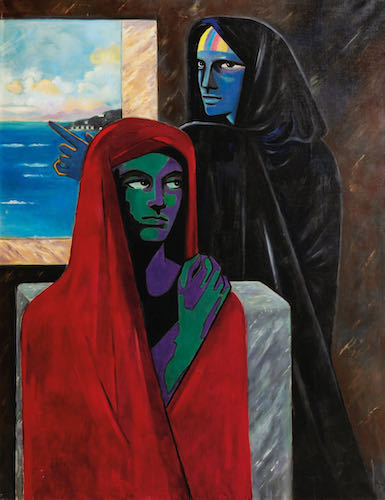
Jean Cocteau, Phèdre et Œnone, 1951
Jean Cocteau's had passion for drawing. The artist was influenced and work in the Dada movement, among others. He wrote Le Potomak (1919), then publishes his novel Thomas l'Imposteur in 1923, inspired by his experience of the First World War. He also produced his first drawings in 1924. Cocteau had a passion for graphic art that over the years led to a large number of illustrations, frescoes and even stained-glass windows. In 1925, he made his first short film. Still suffering from his addiction to opium, the artist was hospitalized to wean himself off it. During a detoxification treatment, locked in his hospital room, Cocteau wrote his transgressive novel “Les Enfants Terribles”, published in 1929, in just seventeen days. Having accumulated enough experience, he embarked on his first feature film in 1930, “Le Sang d'un poète”, an experimental film in four parts. Two years later, he began writing his four-act play “La Machine Inférnale”, which premiered on 10 April 1934.
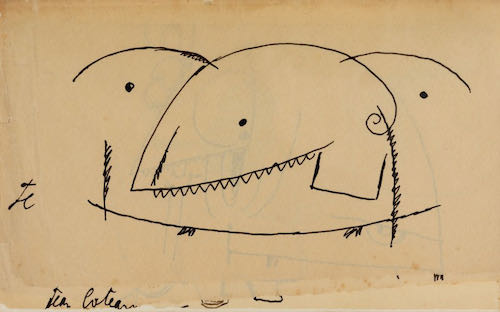
Jean Cocteau, Le Potomak, 1919, Dessin 1
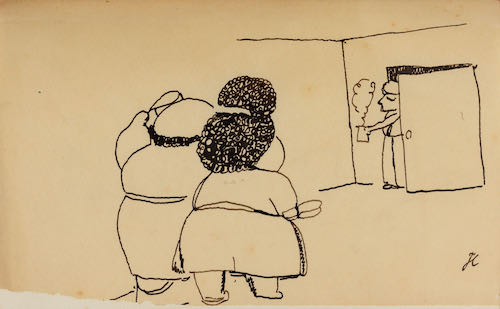
Jean Cocteau, Le Potomak, 1919, Dessin 2
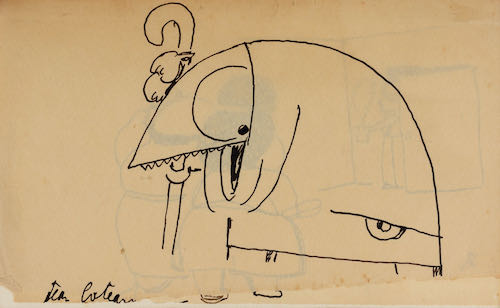
Jean Cocteau, Le Potomak, 1919, Dessin 3
His visual art belongs in the collections of the MoMA New York, the Courtauld Institute of Art in London, The National Gallery of Art in D.C., among other institutions, and his artworks sell for over six-figure prices on the secondary market.
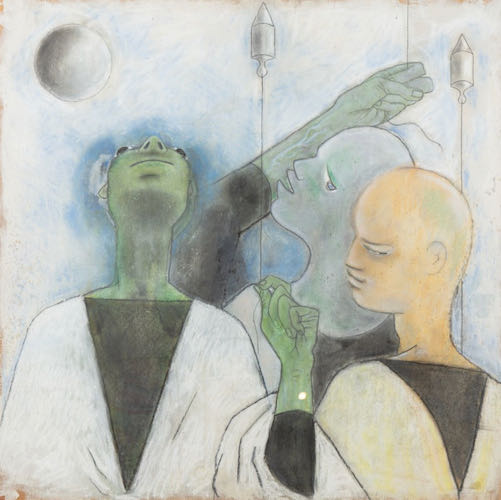
Jean Cocteau, Trois Astrologues, 1954
Cocteau had many critics, but his talent earned him recognition that included election to the Académie Française in 1955. He died at Milly-la-Forêt, France, on Oct. 11, 1963.
During his life, Cocteau was commander of the Legion of Honor, Member of the Mallarmé Academy, German Academy (Berlin), American Academy, Mark Twain (U.S.A) Academy, Honorary President of the Cannes Film Festival, Honorary President of the France-Hungary Association and President of the Jazz Academy and of the Academy of the Disc.
He is buried in the Chapel of Saint-Blaise-des-Simples in Milly-la-Forêt (Essonne). On his tombstone, there is the epitaph: "I remain with you."
